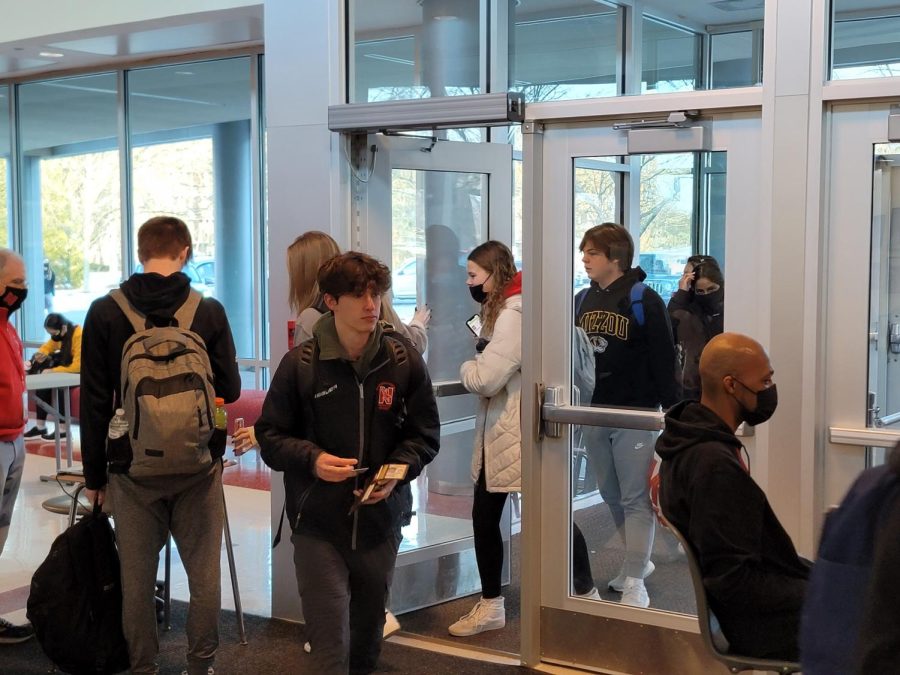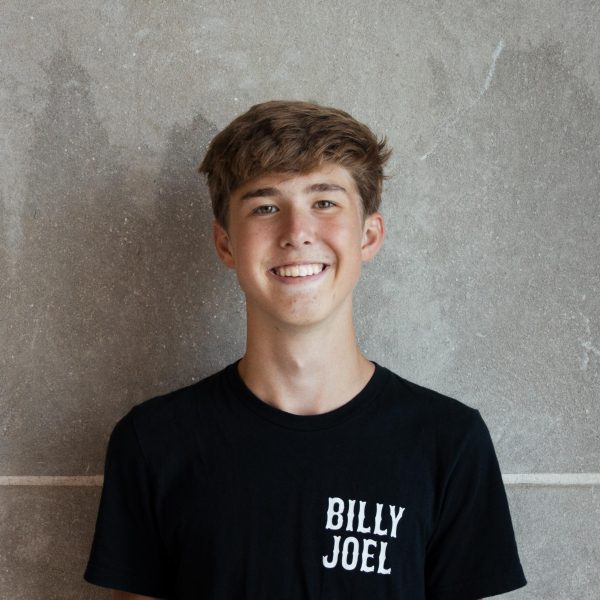Naperville Central, District 203 see first mask optional day of instruction
Students entered Naperville Central on Feb. 15 with the ability to decide whether or not to wear a mask. Just one week ago, school administrators prevented students from entering the building unmasked in an attempt to enforce the existing District 203 policies on masking. On Sunday, that policy was revised to state that mask wearing is “strongly encouraged, but not required” beginning Feb. 15.
February 15, 2022
Face masks will be strongly recommended, but not required, for all students, staff and visitors at Naperville District 203 facilities starting Tuesday, Superintendent Dan Bridges wrote in a Feb. 13 message .
The change was made based upon “local health metrics and the district’s ability to successfully mitigate risk,” according to the announcement sent by Bridges, which followed an emergency Board of Education meeting. The district also said they believe changing mitigation strategies is now safe in a learning environment, citing both District 203 zip codes’ and DuPage county’s higher than average vaccination rate. Regardless of the rules within school, masks are still to be worn on school buses per federal guidelines.
The alteration in policy comes after a number of parent and student complaints and a protest last Wednesday. However, these protests were not in consideration when deciding the course of action for lifting the mask requirement, said Alex Mayster, executive director of communications for District 203.
Several parents also threatened lawsuits at the Feb. 7 Board of Education meeting, however it is unclear if any lawsuits were influential to the decision. Mayster did not respond to a request to interview.
“I expect to see some students with masks and some without masks,” Principal Bill Wiesbrook said. “I talked to the principals of some surrounding schools that already went mask optional and they are seeing about 50% wearing masks and 50% not wearing masks.”
Many students say they welcome the option to unmask.
“I’m cool with it,” junior Duncan Foley said. “I support people’s right to choose. If someone tells me to put it on, I’ll put it on but other than that, I don’t really care about it.”
Some will continue to mask up.
“I’ll keep on wearing my mask out of respect for others,” sophomore Harry Yu said. “But I understand the decision was probably not made lightly. There’s a lot of people pressing down from above.”
Many teachers are preparing for the change by spacing out desks in classrooms to maintain social distancing. Teachers do not have the authority to require students to wear a mask in their classrooms.
“Teachers ought not to tell students to put masks on,” Wiesbrook said. “We want to respect everyone’s decisions.”
For those who decide to continue wearing masks, schools are stocked with supplies of KN95 masks that can be picked up or distributed upon request. KN95 masks offer similar levels of filtration as N95 masks, both of which are more effective than regular surgical masks at denying coronavirus entry into the respiratory system.
Quarantine guidelines have been adjusted in tandem with the masking rules. Those diagnosed for COVID must quarantine for at least five days. Close contacts of COVID cases will not be required to quarantine, but will be strongly encouraged to.
In his letter to the community, Bridges states that if health metrics or mitigation circumstances change, the decision to require or not require masks may be reevaluated in the future.









